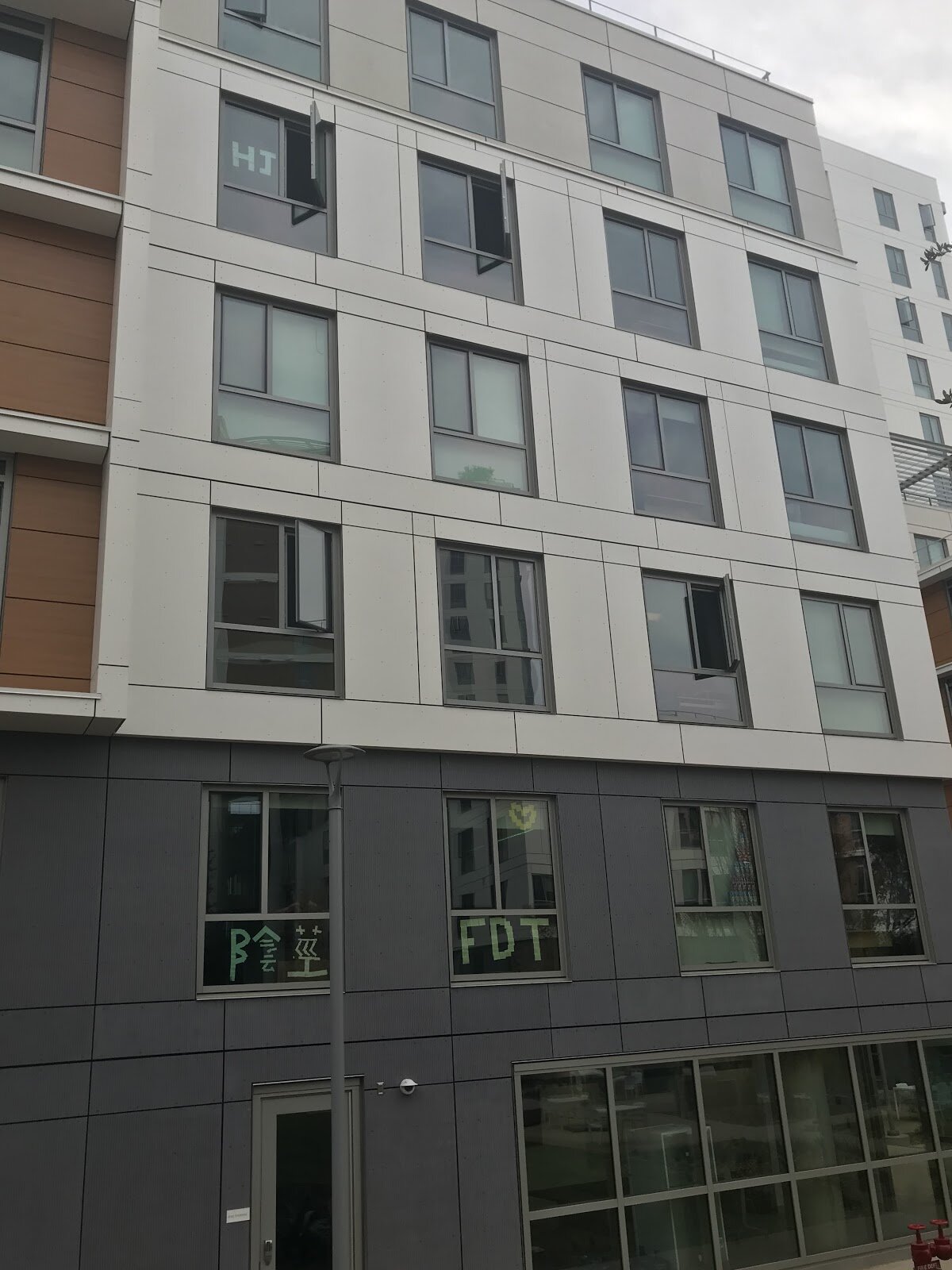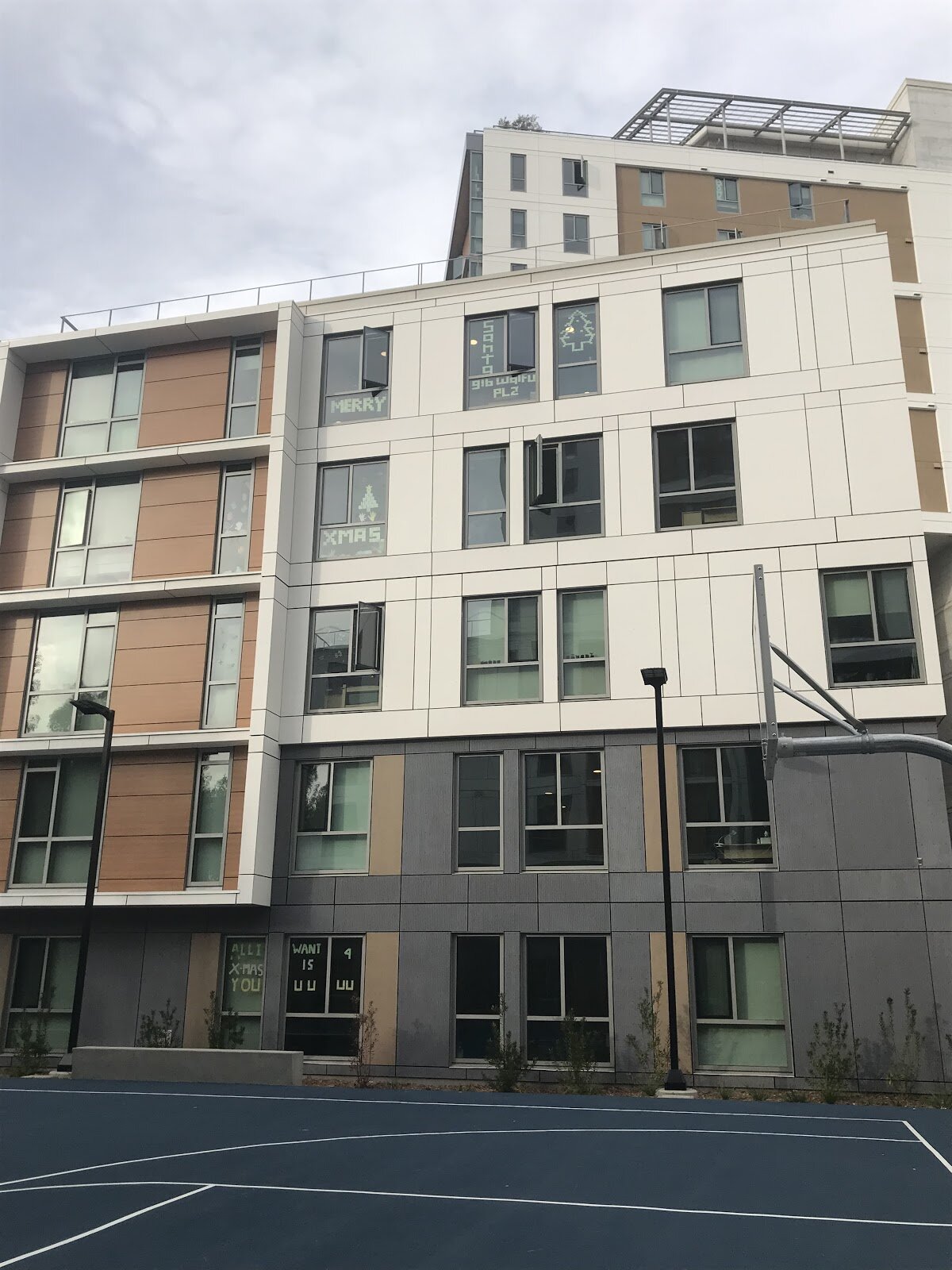By Elinor Oren, Live-Learn Fellow
The North Torrey Pines Living Learning Neighborhood was intentionally designed with high visual accessibility to increase casual and chance physical encounters. All residence halls feature large bedroom and living room windows often overlooking common areas, and building angles and positioning promote this view. Consequently, there are many vantage points into the windows from the ground, particularly for lower-level floors.
While the design intent was to connect residents to see the outside, the effect has essentially been flipped – providing an opportunity to be seen. This has allowed students to communicate social signals via their windows.
Social signals are communicative and informative signals or messages that directly or indirectly provide information about social affiliations, social behavior, social interactions, social emotions
Throughout Sixth, students have used windows as galleries for personal expression: creating post-it note window displays of political messages, pop-culture figures, and internet memes; showcasing decorations affiliated with particular identities; divulging personal contact information.
The size, line of sight, and angling of the building aid social signaling.
This visibility means some residents showcase their affiliations even with their blinds down, such as TikTok users copying the app’s LED aesthetic. Other residents communicate signals simply by having their blinds up and the size, line of sight, and angling of the building aid social signaling.
While post-it note messages and displays are deliberate broadcasts to peers, not all social signaling is intentional or meant for public consumption. This is particularly true when residents illuminate their rooms. Midday, a glimpse into lit rooms shows students’ belongings – posters, exercise equipment, planters, pillows – and communicates their aesthetics, hobbies, and preferences. However this phenomenon is most prominent in the evening, when bright rooms are accentuated by their contrast with darkness. Thin, transparent blinds allow visibility into rooms with blinds up or down. For instance, TikTok users inadvertently showcase their affiliations with their blinds down, as the app’s LED aesthetic gleams from behind the blinds.
Though unintentional signaling may quickly become a substantial privacy concern: beyond divulging belongings and affiliations, the view often features student silhouettes, which transmits personal information about behavior and habits.
Not all signaling is intentional.
What about privacy?
The Living Learning Neighborhood’s buildings’ propensity for visual communication has allowed Sixth students to communicate at an unprecedented scale. The building structure and layout are supplemented by the change in volume and composition of the adjacent population. While previous Sixth residences dispersed the student population, separating freshman and sophomore housing, the Living Learning Neighborhood consolidates and concentrates the population. This already larger student audience will shortly be augmented by the hub of Sixth administration. Together, the changes to the built environment and audience volume provide a larger platform, creating more of an incentive for window-based social signaling.












